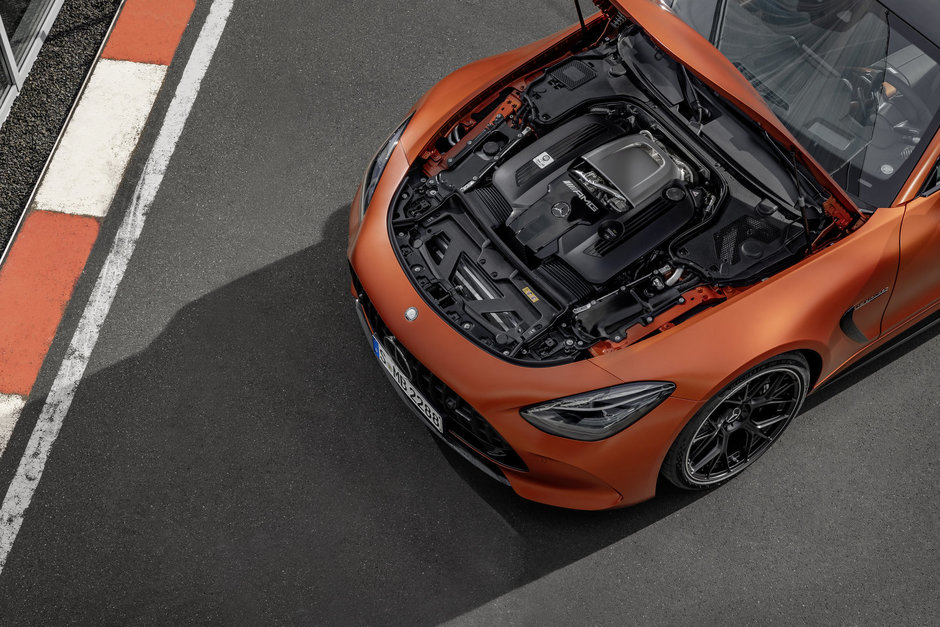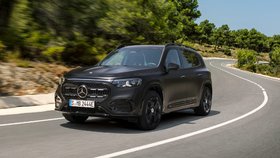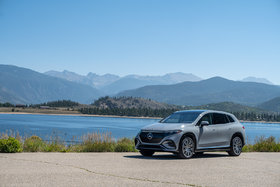From the Track to Your Driveway: How Mercedes-AMG F1 Tech Powers Your Car
June 20 2025,

The roar of engines at Circuit Gilles Villeneuve during the 2025 Canadian Grand Prix is still fresh in our minds. While fans cheered for the Mercedes-AMG PETRONAS F1 Team, few realize that the cutting-edge technology powering those race cars also drives the Mercedes-AMG vehicles you can buy today.
Mercedes-AMG's "One Man, One Engine" philosophy extends beyond craftsmanship to include genuine technology transfer from Formula 1. The innovations proven under extreme racing conditions don't stay on the track—they make their way to your local roads, bringing F1 performance to everyday driving.
Electric Exhaust Gas Turbocharger: F1 Response Without Delay
The most direct F1 technology transfer appears in the electric exhaust gas turbocharger found in current AMG models. This system uses the same principles that have powered Mercedes-AMG's hybrid race cars for years.
Traditional turbochargers suffer from lag—that brief delay when you press the accelerator and wait for boost. Mercedes-AMG eliminated this problem by adding an electric motor directly to the turbocharger. The result is immediate response across the entire rev range, just like F1 cars need when exiting tight corners.
Current models featuring F1-derived electric turbocharging:
- 2025 AMG C 43 4MATIC Sedan: 416 hp with instant throttle response
- 2025 AMG GLC 43 4MATIC SUV: 416 hp with racing-inspired acceleration
- Mercedes-AMG C 63 S E PERFORMANCE: World's first production electric exhaust gas turbocharger
The AMG C 63 S E PERFORMANCE deserves special mention. Its turbocharger is significantly larger than those in other models, allowing higher airflow and more power. The integrated electric motor runs on a 400-volt system, delivering the kind of immediate response that F1 drivers demand.
High-Performance Hybrid Systems Straight From Racing
The E PERFORMANCE hybrid system represents the most advanced technology transfer from F1 to road cars. This system combines a front combustion engine with an electric motor positioned on the rear axle—the same P3 hybrid layout used in Formula 1.
The rear-axle electric motor provides several advantages. It delivers power directly to the wheels without transmission losses, perfect for launching from standstill or executing quick overtaking maneuvers. If rear wheel slip occurs, the system transfers power to the front wheels through AMG Performance 4MATIC+ all-wheel drive.
F1-Inspired Battery Technology
The high-performance battery development comes directly from Mercedes-AMG's Formula 1 experience. Unlike regular EV batteries designed for maximum range, these units prioritize rapid power delivery and energy recovery.
The innovative direct cooling system flows high-tech coolant around all 560 cells, maintaining optimal operating temperature around 45 degrees Celsius. This ensures consistent power delivery and maximizes energy recuperation—crucial for both F1 performance and street driving efficiency.
Current E PERFORMANCE Models:
- 2025 AMG GT 63 S E PERFORMANCE: 805 hp combined system output, 0-100 km/h in 2.8 seconds
- Mercedes-AMG C 63 S E PERFORMANCE: 671 hp system output, 0-100 km/h in 3.4 seconds
- 2025 AMG S 63 E PERFORMANCE: 791 hp combined power, 0-100 km/h in 3.3 seconds
Advanced Chassis Technology From Motorsport
Beyond powertrains, Mercedes-AMG transfers crucial handling technologies from F1 to production cars. Active rear-axle steering, first proven in racing, now appears in road cars like the AMG GT 63 S E PERFORMANCE.
The AMG SPEEDSHIFT MCT 9-speed transmission replaces conventional torque converters with wet start-off clutches, reducing weight and inertia while delivering quicker shifts. This technology traces directly back to racing transmission development.
AMG Performance 4MATIC+ all-wheel drive can vary torque distribution from 50:50 to 100% rear-wheel drive based on driving conditions. This flexibility, impossible with traditional all-wheel systems, comes from racing where instant traction adaptation determines race outcomes.
The Operating Strategy Connection
Perhaps most importantly, the basic operating strategy for hybrid systems comes directly from F1 race cars. The system ensures maximum propulsion whenever you accelerate aggressively—whether launching out of corners or overtaking on highways.
Drivers can select four different recuperation levels using steering wheel buttons, with the highest level enabling one-pedal driving similar to pure electric vehicles. This flexibility mirrors F1 energy management strategies where drivers constantly balance power deployment and recovery.
Ready to experience F1 technology on Quebec roads? Visit Mercedes-Benz de Blainville to test drive these racing-inspired vehicles and feel the difference that genuine motorsport engineering makes in everyday driving.





